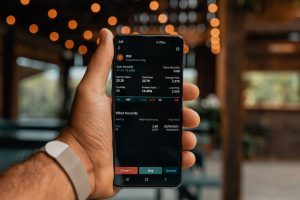Spread in Forex refers to the difference between the bid and ask price of a currency pair. The bid price is the price at which a trader can sell a currency, while the ask price is the price at which a trader can buy a currency. The spread, therefore, represents the cost of trading a currency pair.
In Forex trading, traders buy and sell currency pairs in the hopes of making a profit. For example, a trader may buy the EUR/USD currency pair at a lower price and sell it at a higher price to make a profit. However, the trader must first pay the spread, which is the cost of the transaction.
The spread is usually measured in pips, which is the smallest unit of price movement in Forex trading. A pip is equal to 0.0001 of a currency unit, and it represents the fourth decimal place in most currency pairs. For example, if the bid price for the EUR/USD currency pair is 1.2000, and the ask price is 1.2005, the spread is 5 pips.
The spread can vary depending on the liquidity of the currency pair and the market conditions. In general, currency pairs with high liquidity, such as the EUR/USD, have lower spreads than currency pairs with low liquidity. Low liquidity means there are fewer buyers and sellers in the market, which can cause wider spreads.
The spread is also affected by market volatility. During times of high volatility, such as news releases or major economic events, the spread can widen significantly. This is because there is an increased demand for trading, which can cause a shortage of liquidity and wider spreads.
Traders can choose between two types of spreads: fixed and variable. Fixed spreads are predetermined by the broker and do not change, regardless of market conditions. This can be beneficial for traders who want to know the exact cost of trading before entering a position. Variable spreads, on the other hand, fluctuate depending on market conditions. They can be wider or narrower depending on the liquidity of the currency pair and the volatility of the market.
Spreads can also be categorized as dealing desk and non-dealing desk spreads. Dealing desk spreads are offered by market makers, which are brokers that create their own market by buying and selling currencies to their clients. These brokers may widen the spreads to increase their profits. Non-dealing desk spreads are offered by brokers that route their clients’ orders to the interbank market. These brokers usually offer lower spreads than dealing desk brokers, but they may charge a commission on each trade.
The spread is a crucial factor to consider when choosing a Forex broker. Traders should look for brokers that offer competitive spreads and transparent pricing. It is also important to consider the broker’s reputation and reliability, as well as the quality of their trading platform and customer support.
In conclusion, the spread is a fundamental concept in Forex trading that represents the cost of trading a currency pair. Traders should be aware of the different types of spreads and how they can affect their trading performance. By choosing a reputable broker with competitive spreads and transparent pricing, traders can minimize their trading costs and increase their chances of success in the Forex market.





